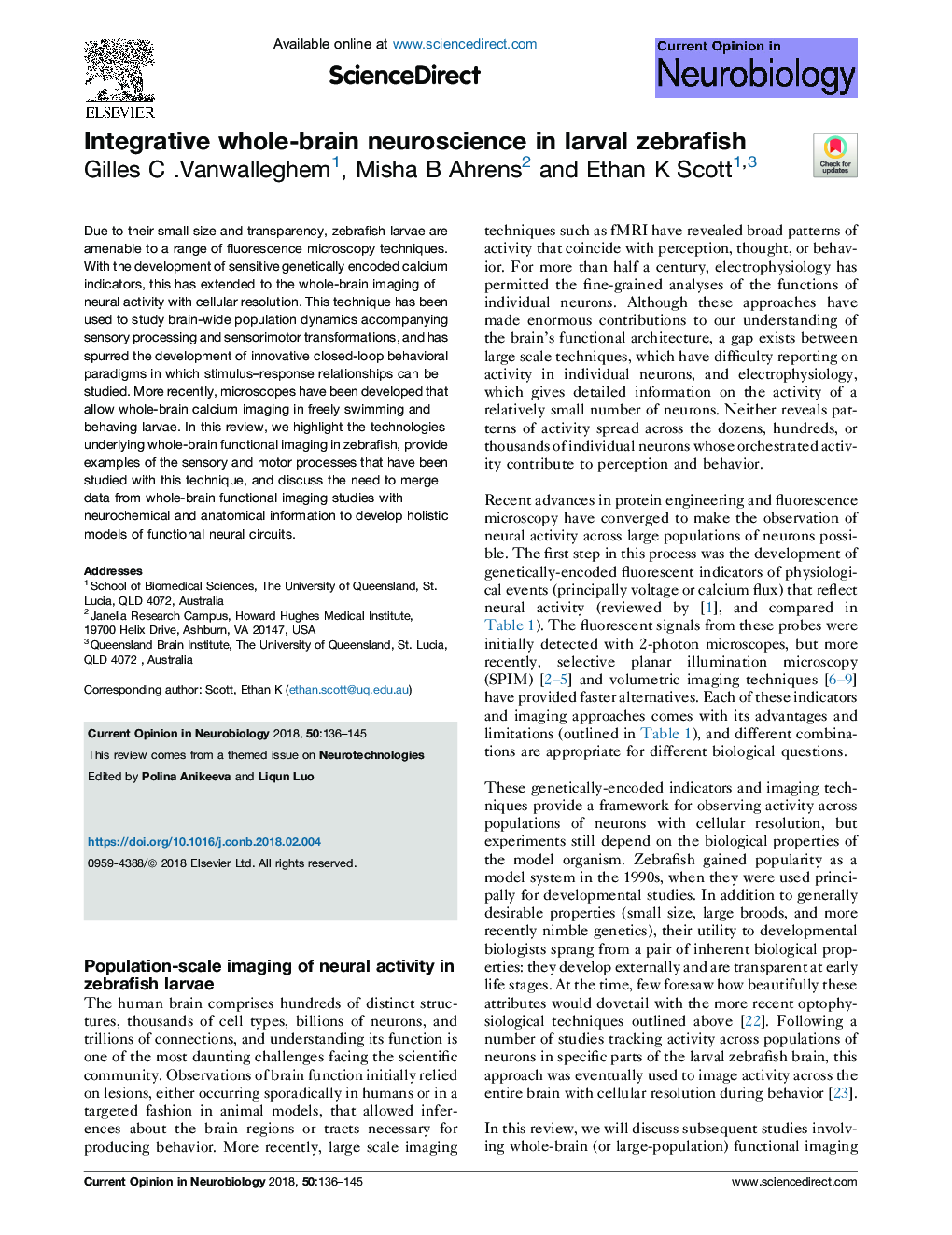| Article ID | Journal | Published Year | Pages | File Type |
|---|---|---|---|---|
| 8840102 | Current Opinion in Neurobiology | 2018 | 10 Pages |
Abstract
Due to their small size and transparency, zebrafish larvae are amenable to a range of fluorescence microscopy techniques. With the development of sensitive genetically encoded calcium indicators, this has extended to the whole-brain imaging of neural activity with cellular resolution. This technique has been used to study brain-wide population dynamics accompanying sensory processing and sensorimotor transformations, and has spurred the development of innovative closed-loop behavioral paradigms in which stimulus-response relationships can be studied. More recently, microscopes have been developed that allow whole-brain calcium imaging in freely swimming and behaving larvae. In this review, we highlight the technologies underlying whole-brain functional imaging in zebrafish, provide examples of the sensory and motor processes that have been studied with this technique, and discuss the need to merge data from whole-brain functional imaging studies with neurochemical and anatomical information to develop holistic models of functional neural circuits.
Related Topics
Life Sciences
Neuroscience
Neuroscience (General)
Authors
Gilles C .Vanwalleghem, Misha B Ahrens, Ethan K Scott,
